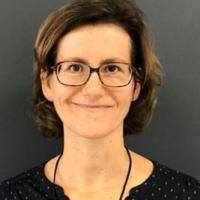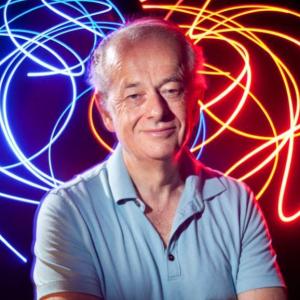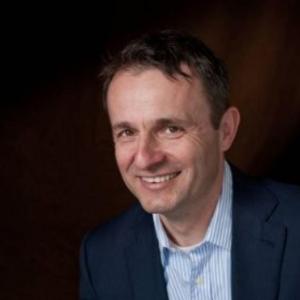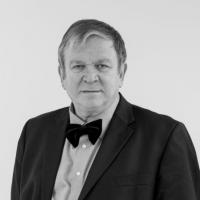Plenary Speakers
EOSAM includes several high-level speakers from various fields of optics. These plenary speakers will present their research to the whole audience at EOSAM.
Sophie Brasselet
Research Director CNRS (directeur de recherche CNRS)
Institut Fresnel, France
Sophie Brasselet is an optical physicist. She obtained her PhD in 1997 at Université Paris Sud / CNET Bagneux, France, on the manipulation of nonlinear optical properties of polymers, followed by a 2-years postdoc in the group p W.E. Moerner (Stanford Univ. USA) working on single molecules detection in biological samples. She was assistant professor at Ecole Normale Supérieure de Cachan for 7 years and then moved to Institut Fresnel, Marseille France, where she is currently a CNRS research director. For the last fifteen years, she has developed novel nonlinear imaging and super-resolution microscopy methodologies based on polarized light, dedicated to the investigation of biomolecular organization and structure at the nanoscale. She has in particular pioneered methodologies for the retrieval of structural information from molecular assemblies, based on polarized signals. She is currently working on adapting these approaches at high angular and spatial resolutions, high dynamic rates, and inside biological tissues.
Title: Polarized microscopy, towards molecular-organization imaging in cells and tissues
Fluorescence imaging and nonlinear coherent optical microscopy can reveal important spatial properties in nanomaterials, cells and biological tissues from fixed situations to in vivo dynamics. While microscopy can guide interpretation through morphological observations at the sub-micrometric scale, optical imaging cannot directly access the way molecules are organized in specific ulstrastructures, occuring at the molecular scale. This property, which is important in many fields, from material engineering to biomechanics, is today most often studied using electron microscopy (EM) or X ray diffraction, which are not compatible with real time imaging. We will show that reporting molecular organization in protein filaments, aggregates or lipid membranes down to the nano scale is made possible using polarization resolved optical microscopy, which takes advantage of the orientation-sensitive coupling between optical excitation fields and molecular transition dipole moments [1]. We have recently developed polarization sensitive approaches in fluorescent super resolution microscopy to reveal actin filaments’ organization in the cell cytoskeleton that is usually studied by EM [2]. We will discuss the advantages of transposing polarized methodologies to scanning nonlinear optical microscopy [3] for structural imaging, and the challenges still to overcome with respect to fast live imaging, and propagation at large depths in scattering tissues.
[1] S. Brasselet, Advances in Optics and Photonics 3, 205–271 (2011)
[2] V. Curcio et al. Nat. Communications 11 (1) (2020) DOI: 10.1038/s41467-020-19064-6; C. Rimoli et al. (2021) Submitted, bioRxiv DOI: 10.1101/2021.03.17.435879
[3] P. Gasecka et al. Biophys. J. 113 (7), 1520–1530 (2017) DOI: 10.1016/j.bpj.2017.07.033; N.K. Balla et al. ACS Photonics 4 (2), pp 292–301 (2017)
Federico Capasso
Professor
John A. Paulson School of Engineering and Applied Sciences
Harvard University, Cambridge, USA
Federico Capasso is the Robert Wallace Professor of Applied Physics at Harvard University, which he joined in 2003 after 27 years at Bell Labs where his career advanced from postdoctoral fellow to Vice President for Physical Research. He pioneered bandgap engineering leading to many new heterostructure devices including the invention of the quantum cascade laser. He and his group did research on plasmonic and dielectric metasurfaces including the generalized laws of refraction and reflection, flat optics with focus on high performance metalenses and on new methods to generate structured light. He carried out fundamental studies of the Casimir effect including the first measurement of the repulsive Casimir force. He is a member of the National Academy of Sciences, the National Academy of Engineering and the American Academy of Arts and Sciences . His awards include the 2021 Yves Medal and Jarus Quinn Prize of the Optical Society, the Balzan Prize for Applied Photonics, the King Faisal Prize, the American Physical Society Arthur Schawlow Prize, the IEEE Edison Medal, the Materials Research Society Medal, the Franklin Institute Wetherill Medal and the Enrico Fermi Prize. He holds honorary doctorates from Lund University, Diderot University and the University of Bologna.
Title: Meta-optics: From Flat Lenses to Cameras and Structured Light
Subwavelength spaced arrays of nanostructures, known as metasurfaces, provide a new basis for recasting optical components into thin planar elements, easy to optically align and control aberrations, leading to a major reduction in system complexity and footprint as well as theintroduction of new optical functions. The planarity of flat optics will lead to the unification of semiconductor manufacturing and lens making, where the planar technology to manufacture computer chips will be adapted to make CMOS compatible metasurface based optical components for high volume markets like cell phones. New polarization sensitive and depth cameras will be discussed. Metasurfaces also offer fresh opportunities for str ucturing light by wavefront engineering. I will discuss spin to total orbital angular momentum (OAM) converters and high OAM lasing, as well as flat devices that enable light’s spin and OAM to evolve, simultaneously, from one state to another along the propagation direction
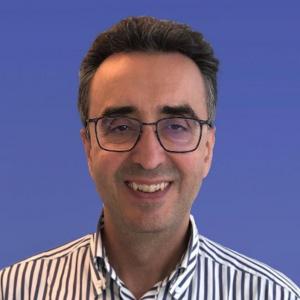 Giulio Cerullo
Giulio Cerullo
Professor
Politecnico di Milano, Italy
Giulio Cerullo is a Full Professor with the Physics Department, Politecnico di Milano, where he leads the Ultrafast Optical Spectroscopy laboratory. Prof. Cerullo’s research activity covers a broad area known as “Ultrafast Optical Science”, and concerns on the one hand pushing our capabilities to generate and manipulate ultrashort light pulses, and on the other hand using such pulses to capture the dynamics of ultrafast events in bio-molecules, nanostructures and two-dimensional materials (graphene, transition metal dichalcogenides). He has published more than 450 papers which have received more than 22000 citations (H-index: 78). He is a Fellow of the Optical Society of America and of the European Physical Society and Chair of the Quantum Electronics and Optics Division of the European Physical Society. He is on the Editorial Advisory Board of the journals Optica, Laser&Photonics Reviews, Scientific Reports, Chemical Physics, Journal of Raman spectroscopy. He is General Chair of the conferences CLEO/Europe 2017, Ultrafast Phenomena 2018 and the International Conference on Raman Spectroscopy 2020.
Title: Ultrafast optical response of two-dimensional materials
Layered materials are solids consisting of crystalline sheets with strong in-plane covalent bonds and weak van der Waals out-of-plane interactions. These materials can be easily exfoliated to a single layer (1L), obtaining two-dimensional (2D) materials with radically novel physico-chemical characteristics compared to their bulk counterparts. The field of 2D materials began with graphene and quickly expanded to include semiconducting transition metal dichalcogenides (TMDs). 2D materials exhibit very strong light-matter interaction and exceptionally intense nonlinear optical response, enabling a variety of novel applications in optoelectronics and photonics. This talk will review our studies on the ultrafast non-equilibrium and nonlinear optical response of 2D materials. We will discuss ultrafast carrier and spin dynamics in 2D semiconductors and their heterostructures. We will also show gate-tunable absorption saturation and third-harmonic generation in 1L-graphene and optical parametric amplification in 1L-TMDs.
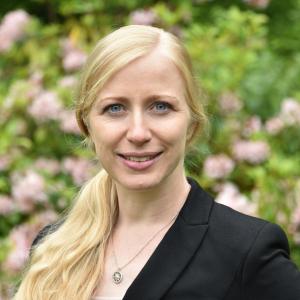 Isabelle Staude
Isabelle Staude
Professor
University of Jena, Germany
Prof. Dr Isabelle Staude studied physics at the University of Konstanz and subsequently received her PhD degree in physics from the Karlsruhe Institute of Technology, Germany, in 2011. For her postdoc, she moved to the Australian National University, where she coordinated the experimental activities on optical nanoantennas and served the nanoplasmonics stream in the Australian Centre of Excellence CUDOS as deputy project leader. She returned to Germany in mid-2015 to establish a junior research group on functional photonic nanostructures at the Institute of Applied Physics and the Abbe Center of Photonics at Friedrich Schiller University Jena, Germany. She received an Emmy-Noether Grant from the German Research Foundation as well as the Hertha Sponer Prize 2017 from the German Physical Society. In November 2017, she became a junior professor at the same institution, and in spring 2020, she was promoted to full professor and joined the Institute for Solid State Physics at the Friedrich Schiller University Jena.
Title: Tunable, light-emitting and nonlinear all-dielectric metasurfaces
Optically resonant dielectric metasurfaces have been established as a versatile platform for manipulating light fields at the nanoscale. While initial research efforts were concentrated on purely passive structures, all-dielectric metasurfaces also hold a huge potential for dynamic control of light fields, as well as for tailoring light emission processes, such as spontaneous emission and nonlinear frequency generation. This talk will review our recent advances in tunable, light-emitting and nonlinear all-dielectric metasurfaces, and outline future research directions for next-generation metasurface architectures.
Remus Nicolaescu
CEO/Co-founder
Pointcloud Inc, USA
Remus Nicolaescu is the Co-founder and CEO of Pointcloud Inc., a San Francisco based startup developing coherent 3D imaging solutions using silicon photonics. In 2017, together with a team at University of Southampton, he co-founded Pointcloud Inc., with the mission to create a versatile three-dimensional imaging platform using silicon photonics integration, that would enable 3D cameras to become as ubiquitous and performant as their 2D counterparts. Prior to Pointcloud he held executive roles with technology companies in the US, Europe and Asia. He started his career at Intel, where he performed pioneering work in silicon photonics: he was part of the team that demonstrated the first >1GHz silicon photonics modulator; he proposed and developed the research leading to the demonstration of optical Raman amplifiers and lasers in silicon photonics. He obtained his Masters and Ph.D. in Physics from University of Bucharest and Texas A&M University respectively, and MBA from INSEAD.
Title: Coherent focal plane arrays in silicon photonics, towards high performance 3D Imaging using LIDAR
Accurate 3D imaging is essential for machines to map and interact with the physical world. While numerous 3D imaging technologies exist, each addressing niche applications with varying degrees of success, none have achieved the breadth of applicability and impact that digital image sensors have achieved in the 2D imaging world. A large-scale, two-dimensional focal plane array of coherent detector pixels operating as a light detection and ranging (LiDAR) system could serve as the core of a universal 3D imaging platform. It would enable megapixel resolution, high depth accuracy, immunity to interference from sunlight, as well as the ability to directly measure the velocity of moving objects. This talk will present an overview of architectural implementations of large-scale coherent focal plane arrays, and show results of their operation in a 4D imaging (3D + velocity) system. We will discuss performance characteristics, tradeoffs and design optimization for different applications. Finally, we will discuss future architectural implementations and opportunities for pixel size reduction to enable 10 megapixels and beyond coherent imaging cameras.
Remus Nicolaescu, StevenA.Fortune, Andrew J. Compston, Pointcloud Inc.; Ion E. Opris, Opris Consulting; David J. Thomson, University of Southampton; Christopher Rogers, Alexander Y. Piggott, Alexander Gondarenko, Pointcloud Inc.; Fanfan Meng, Xia Chen, Graham T. Reed, University of Southampton
Nikolay I. Zheludev
Deputy Director (Physics) of the Optoelectronics Research Centre
University of Southampton, UK and Nanyang Technological University, Singapore
Nikolay Zheludev is President’s Professor of Physics and co-Director of the Photonics Institute at Nanyang Technological University Singapore and Professor of Physics and Deputy Director of the Optoelectronics Research Centre at the University of Southampton, UK. He is known for his fundamental studies of metamaterials, nanophotonics, toroidal electrodynamic and optical superoscillations. He is Fellow of the Royal Society (UK Academy of Sciences) and a Member of the US National Academy of Engineering. His awards include the Thomas Youngs Medal and the President's Science Award, Singapore.
Title: Molecular level metrology and imaging with topological light and free electrons
We demonstrate dimensional metrology and odometry (detection of change in position over time) with resolution on nanometric to picometric scales by analysing scattering of electrons or topologically structured light from the nanostructures using artificial intelligence. We show how these techniques can be applied to characterization and optimization of nano-opto-mechanical metamaterials and to fundamental studies of the dynamics of thermal motion and the physics of phonons in photonic nanostructures.
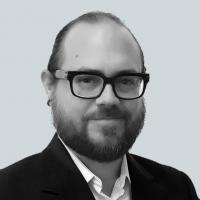 Manuel Guizar-Sicairos
Manuel Guizar-Sicairos
Beamline scientist
Paul Scherrer Institute, Switzerland
Manuel Guizar-Sicairos received his B.Sc. and M.Sc. from the Tecnológico de Monterrey, Mexico, and his Ph.D. from the University of Rochester in 2010. Currently, he is a beamline scientist at the coherent small-angle X-ray scattering (cSAXS) beamline of the Swiss Light Source (SLS) and has coauthored of over 100 peer-reviewed publications. His research focuses on the development, advancement, and application of coherent X-ray imaging techniques, in particular on innovations in novel imaging methods and image reconstruction algorithms. He has contributed to novel approaches in X-ray coherent imaging including X-ray holography, to phase retrieval, ptychography, small-angle X-ray scattering, and tomography.
Title: Harnessing coherence and computational imaging for nanoscale structure characterization using X-rays
Access to local information about material composition and its distribution at the nanoscale is of chief importance for studying functional materials both for biology and materials science, as well as for the fundamental understanding of physical properties. X-ray imaging with high-energy photons, otherwise known as hard X-rays, offers an opportunity for deriving such information in a minimally intrusive procedure. This is due to the high penetration depth of hard X-rays, which allows probing intact representative volumes, and combined with their sub-nm wavelength opens the door to nm-scale imaging. One of the challenges for nm-resolution imaging at these energies lies in the fabrication of lenses of sufficient quality. If the X-ray source is coherent, then imaging lenses can be forgone altogether and instead computational reconstructions can be used, for example via holography or iterative phase retrieval algorithms. In this talk, I will provide an introduction to some of the coherent lensless imaging techniques used in X-ray microscopy for nanoscale imaging: X-ray holography, coherent diffractive imaging, and ptychography. Furthermore, I will show examples from the state of the art methods and how they are used today for nanoscale 3D imaging, imaging of fast dynamics, and chemical characterization of functional materials. I will also introduce the principle, and practical examples, of surveying nanostructure properties on macroscopic-scale samples using scanning small angle X-ray scattering (SAXS). In our group, we have generalized this technique using tensor tomography in order to probe statistical anisotropy of nanostructure in samples on the order of millimeters in linear size.

